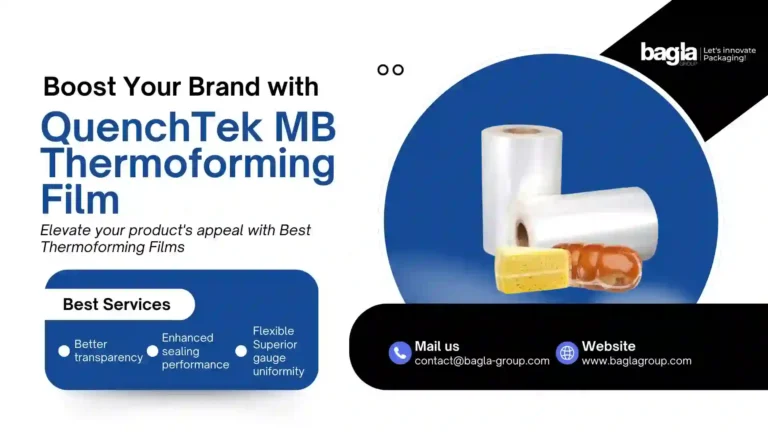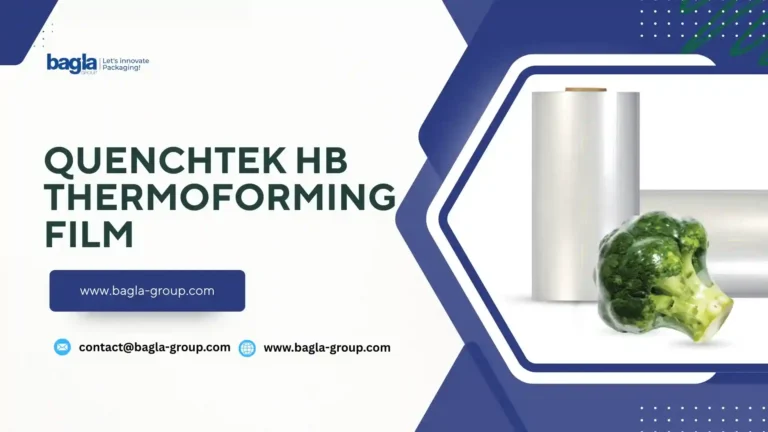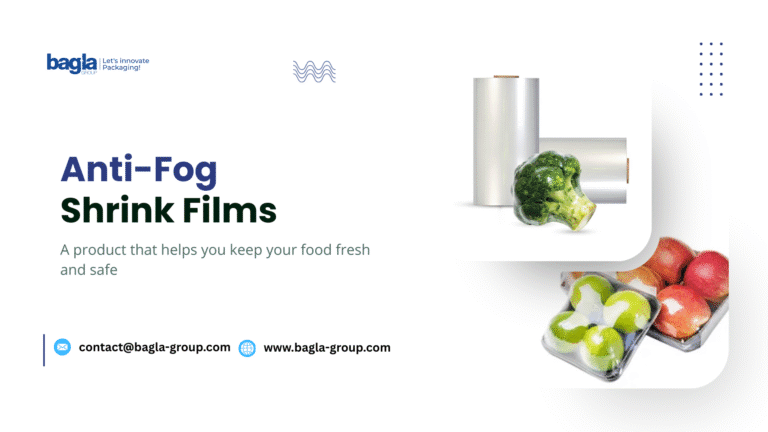Nowadays, the consumer is becoming more conscious of food safety, shelf life, and environmental impact. Packaging technology must rise to meet these evolving demands. Polyolefin (POF) shrink film is a material that checks many of these boxes.
It is versatile, food safe, visually attractive, and suitable for both high-volume manufacturers and small-scale producers. Whether you need to wrap a chocolate bar or a bundle of water bottles, shrink films are one of the reliable choices in the food industry.
Here, you will learn about polyolefin (POF) shrink film and how it can be used in food packaging.
What is Polyolefin (POF) Shrink Film?
Polyolefin shrink film is a thermoplastic polymer made primarily from polyethylene (PE) and polypropylene (PP). It is a clear, thin, and flexible plastic film that shrinks tightly around an object when heat is applied. POF is available in single-layer and multi-layer forms. You must choose the best one under the expert guidance of the Bagla Group according to your product requirements.
How Does POF Shrink Film Work?
The process of using POF shrink film in food packaging involves 4 major steps:
- Wrapping – The product is wrapped in the film using a different machine, such as L-bar sealers, manual sleeve wrappers, or high-speed flow wrappers.
- Sealing – The film is heated to form a complete wrap around the product as per the product’s shape.
- Shrinking – It is passed through a heat tunnel (or subjected to a heat gun) where the film contracts, forming a tight, protective layer.
- Cooling – Once it cooled, the film gained its new shape, creating a tamper-evident, appealing package.
This simplest integration of automation and film behavior is one of the biggest reasons POF is widely used in the food production industry.
Why is POF Shrink Film Used in Food Packaging?
If you are looking for a reason why the POF shrink film is used in the food packaging industry, then read the points mentioned below:
- Regulatory Compliance – The FDA, EU, and other global bodies approve the food-grade POF films. This indicates that they are safe for direct contact with a wide range of food types.
- Shelf Life Enhancement – Proper sealing increases shelf life by reducing contamination, oxidation, and moisture loss. It can be used with Modified Atmosphere Packaging (MAP) for sensitive items.
- Eco-friendliness – It supports the environment and can be recycled in Category 4 or 5 plastics streams (check with local facilities).
- Excellent Branding Opportunity – These shrink films allow for complete visibility of the food product. They can be printed with logos, QR codes, or promotional designs that are impressive for the consumer and help with branding.
- Cost Efficiency – Though initial material cost may be higher than PVC or PE, its strength and yield (more packages per roll) make it more cost-effective over time.
Key Properties of POF Shrink Film
The main properties of POF shrink film is as follows:
| Property | Description |
| Clarity | For excellent product visibility, it provides high gloss and transparency |
| Shrinkability | Across the surface, it shrinks up to 70% uniformly |
| Strength | Tear-proof & puncture-resistant, especially in multi-layer grades |
| Flexibility | Maintains integrity under cold storage, refrigeration, and some freezing conditions |
| Barrier Properties | Depending on the grade, it offers moderate resistance to oxygen and moisture. |
| Sealing Compatibility | Excellent hot-tack sealing with various machines |
| Thickness Range | Available in 12, 15, 19, 25, and 30 microns (μm) |
What is Cross-Linked POF Film?
Cross-linked POF film is a special type of polymer film that is crosslinked and undergoes electron beam irradiation, which enhances tear and puncture resistance. It is the preferred choice for heavy-duty food packaging where durability is crucial.
What is Non-cross-linked POF film?
Non-Cross-Linked POF Shrink Film is a type of multilayer film that provides a perfect balance of cost-efficiency, clarity, and ease of use.
What Are The Types Of Shrink Films Used In Food Packaging?
The following are the types of shrink films used in food packaging:
- Polyolefin (POF) Shrink Film – It is a highly durable shrink film that has been FDA-approved for direct food contact. Because of its clarity and strength, it is commonly used in food packaging.
- Polyvinyl Chloride (PVC) Shrink Film – It is cost-effective and should not be used for food packaging. It releases harmful fumes when heated. It is not FDA compliant, so it is not a good option for food packaging directly.
- Polyethylene (PE) Shrink Film – Thick and tough, mainly used for bundling and secondary packaging like water bottles and cans.
How is POF Different From PVC Shrink Film?
Let’s understand the difference between POF and PVC shrink film:
| Features | POF | PVC |
| Food Safe | Yes (FDA Approved) | No (Not safe for direct contact) |
| Flexibility | Soft & flexible | Rigid & brittle |
| Sealing Strength | Strong, Tear-Resistant | Prone to splitting |
| Environmental Safety | Low emissions, recyclable | Releases toxins when heated |
| Appearance | Glossy, high-clarity finish | Clear but tends to yellow over time |
What Food Products Are Commonly Packaged With POF Shrink Film?
These are the food products commonly packaged with POF shrink film:
- Baked goods (bread, cookies, muffins)
- Fresh produce (fruits, vegetables)
- Frozen foods (pizza, ready meals)
- Confectionery (chocolates, candies)
- Meat and cheese (secondary packaging)
- Snack foods (granola bars, popcorn)
Best Practices for Food Packaging with POF
- Use FDA-compliant POF for direct food contact.
- Store film rolls in a dry, cool area away from sunlight.
- Ensure tight, wrinkle-free wrapping for a professional look.
- Avoid over-shrinking, which can crush soft food items.
- Regularly maintain heat-sealing and shrinking equipment.
Conclusion
Polyolefin (POF) shrink film is a versatile, food-safe, and recyclable packaging solution. It is widely adopted in the food industry. It stands out for its clarity, strength, and adaptability to various product types and packaging systems. By following best practices and proper storage methods, businesses can maximize shelf life and presentation quality using POF shrink wrap.
Can POF Shrink Wrap Be Used For Frozen Foods?
Yes, POF shrink wrap can be used for packaging frozen food and retaining its integrity at freezing temperatures.
Does It Protect Food From Moisture And Oxygen?
Yes, it provides a moderate barrier against moisture and oxygen. It helps extend the shelf life of food. For high-barrier needs, the food industry can shift to high thermoforming barrier films or medium-barrier thermoforming films.
How Should POF Film Be Stored?
Store in a cool (15–30°C), dry place away from direct sunlight and humidity. Avoid high heat, which can affect shrink properties.



